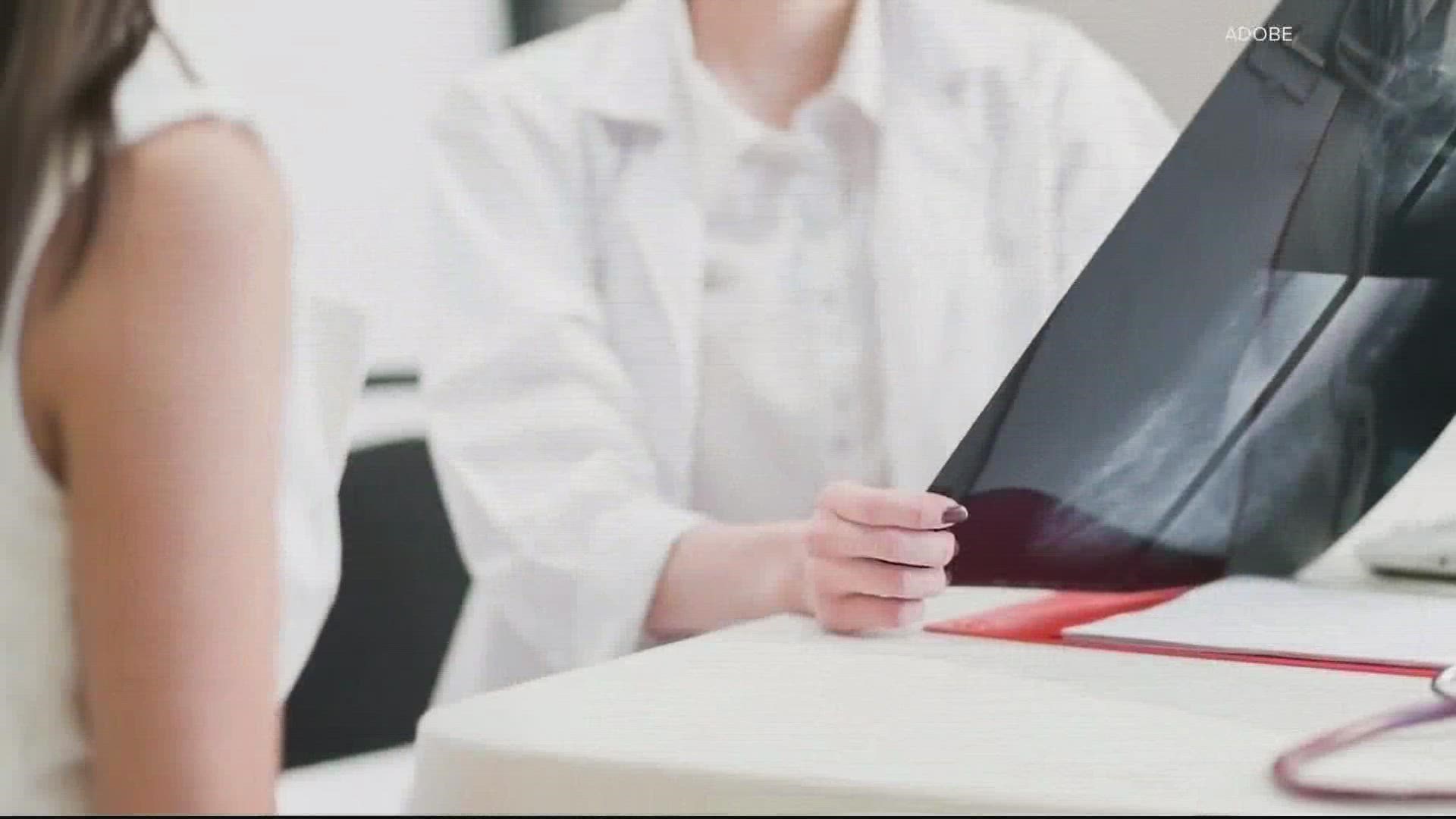WASHINGTON — It’s easy to get lost in a blur of pink, but breast cancer awareness means more than simply knowing about the disease. It means knowing the facts about causes, treatment, and prevention. So we’re going to debunk some common breast cancer myths, and verify what’s true.
SOURCES:
WHAT WE FOUND
MYTH: Breast cancer is always indicated by a lump in your breast you can feel.
FACT: Checking for bumps, plus changes in texture, shape, and in the nipple, is good practice–but BreastCancer.org urges: this is no substitute for regular mammograms.
Additionally, the National Breast Cancer Foundation points out–only a small percentage of breast lumps actually turn out to be cancer.
However, it shouldn’t be ignored—and instead signal a call to your doctor.
MYTH: Mammograms can cause breast cancer.
FACT: Though X-raying the breast does emit a small amount of radiation–and repeated exposure to X-rays does have potential to cause cancer– the National Cancer Institute explains the dose is low, and “the potential benefits of mammography nearly always outweigh the potential harm.”
Breastcancer.org further explains, the breast compression during a mammogram cannot cause or spread cancer.
MYTH: Wearing a bra is linked to breast cancer.
FACT: There’s no evidence that restrictive bras, not even those with underwire, are linked to breast cancer. This 2014 study involving about 1,500 hundred women concluded bra-wearing had nothing to do with whether or not she was diagnosed with breast cancer.
MYTH: Wearing antiperspirant causes breast cancer.
FACT: The safety of some of the chemicals used in your daily deodorants is still being studied—especially those containing aluminum. But at this point, there’s no evidence a buildup of aluminum, or keeping yourself from sweating out your armpits, causes breast cancer.
A BreastCancer.org article on this topic elaborates: “Even the strongest antiperspirant doesn't block all perspiration in the armpit. Most cancer-causing substances are removed by the kidneys and released through urine or processed by the liver. Sweating isn't a significant way for your body to release toxins.”
MYTH: Breast cancer is always inherited.
FACT: While family history may be a sign of increased risk and more intensive screening recommendations, most breast cancer patients actually don’t have a family history.
“Thirty percent of people with breast cancer have a family history, but that means that 70% don’t,” said Dr. Claudine Isaacs, MedStar Georgetown University oncologist. “So clearly, it's not all about family history, and there's lots that we have to learn about this.”
Certain genetic changes, like BRCA 1 and BRCA 2 gene mutations, can also mean higher likelihood of breast cancer–but not every breast cancer patient has that indicator.
The American Cancer Society says 5 to 10 percent of breast cancer cases are thought to be hereditary, and genetic mutations can be passed from either parent.
“Alterations in genes are passed on equally by males and females,” said Dr. Kala Visvanathan of Johns Hopkins Medicine.
MYTH: Men can’t get breast cancer.
FACT: While a leading risk-factor is being born female–thus, most screening guidance will be directed at women–people of any sex can develop breast cancer.
It is rare in males, about 1 in 100 breast cancer cases, and is most commonly detected in the nipple area. According to the CDC, the most common kinds of breast cancer in men are the same kinds in women—invasive ductal carcinoma, invasive lobular carcinoma, and Ductal carcinoma in situ (DCIS).
“So if a man feels a lump in their breast, they should definitely bring it to their health care provider’s attention,” Dr. Isaacs said.

